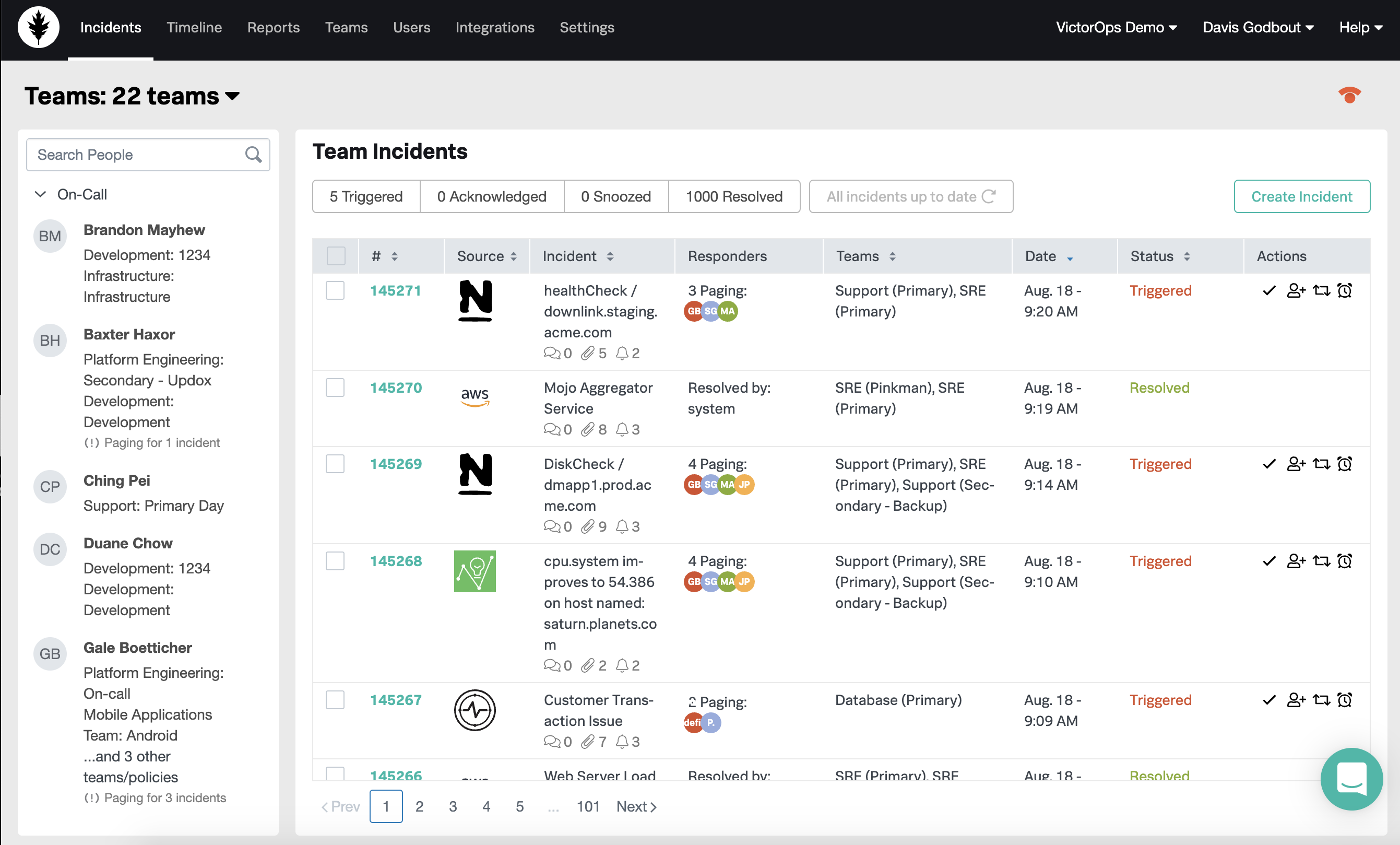Splunk On-Callのインシデント発生後のレビューについて 🔗
チームダッシュボード 🔗
Splunk On-Callチームダッシュボードは、インシデントの包括的な概要を提供します。このビューは、所属しているチームに自動的にデフォルト設定され、チームは詳細を深く掘り下げ、ステータスを理解することができます。
インシデントテーブル内のインテグレーションモニタリングツールに由来するすべてのインシデントには、それぞれのロゴが含まれており、アラートのソースを迅速に特定できます。手動で作成されたインシデント、およびメールエンドポイントまたはREST APIインテグレーションから発生したインシデントには、ロゴは表示されません。
インフォメーションアラートは、のタイムラインページ: でご覧いただけます。
フィルター 🔗
フィルターは、探しているものだけを見るための簡単な方法です。チーム別またはインシデントの状態別にフィルターをかけるかどうかにかかわらず、これらのフィルターにより、自分に関連するものだけを見ることができます。まずインシデントテーブルを、インシデントの状態だけでなく、チームステータス(デフォルトのチーム関連付け)でもフィルターできます。
image _images/spoc/Filters-scaled.jpg
インシデントテーブル 🔗
どのポリシーがページングされているかを簡単に確認し、インシデントにアクションを起こし(承認、応答者の追加、経路変更、スヌーズ、解決)、インシデントのステータスを確認することで、問題に対応中の責任者をすばやく特定できます。また、注釈カウント、チャット、関連するアラートも確認できます。
image: _images/spoc/Incidents-scaled.jpg
手動インシデントの作成 🔗
チームダッシュボードから右上の「インシデントを作成する」を選択し、以下の手順に従って手動インシデントを作成することができます 。
インシデントWar Room 🔗
インシデント番号 リンクをクリックして、チームダッシュボード から直接 インシデントの詳細 にアクセスすると、インシデントWar Room でインシデントとそのイベント履歴が表示されます。
ピープルテーブル 🔗
フィルターリングしたチームにオンコールしているユーザーのリストを参照してください。これらのユーザーがオンコールしているチームを確認したり、ユーザー名をクリックしてオンコールを受けたり、これらのユーザーの今後のシフトを確認することができます。
下のチームビューに移動して、チームに関連する他のユーザーを見ることができます。
他のユーザーからオンコールを引き受ける 🔗
オンコールリストのユーザーに移動し、ユーザー名をクリックします。ここから、ポップオーバーからのユーザーからシフトを引き受けることができます。
オンコールの引き受けを戻すには、プロファイルに関連するポップオーバーから「引き受けをクリア」ボタンをクリックします。
_images/spoc/People-Table.jpg
_images/spoc/Take-On-Call.jpg
